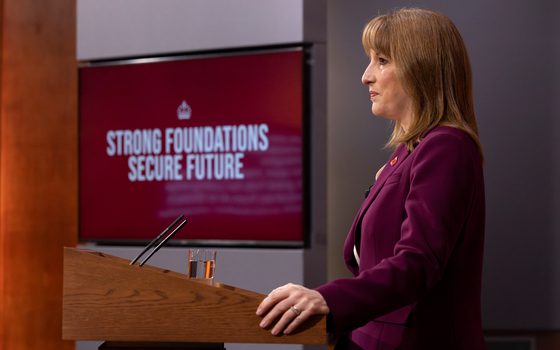What is framing?
Progressives are used to presenting facts and compelling evidence, but finding that people don't come running to support us. Why aren't our messages cutting through?
30 January 2023
This is an article from the fifth issue of the New Economics Zine. You can read the full issue here.
Republican communications strategist Frank Luntz wrote: “communication is functional, the people are the true end, language is just a tool to reach and teach them”.
And yet as people who want to communicate progressive ideas, either at work or at home, we are often met with the frustration of saying the right things, presenting facts and compelling evidence and finding that people don’t come running to support us.
Why aren’t our messages cutting through?
If we want to communicate effectively to shift people’s thinking, we need to start by not only thinking of what we are saying but most importantly how it’s going to be received.
The truth is, human beings are complex, messy and contradictory. We are constantly processing the world around us through a filter of pre-existing beliefs and past experiences, deciding what does and doesn’t fit into our understanding of the world. When progressives attempt to convey a message couched in facts and figures, the human brain will ask: ‘Is this useful? Does this fit in with how I see the world?’ For people who aren’t already sold on our worldview, the facts won’t fit and will simply be disregarded. This act of sorting information, making choices about what is important to keep and what isn’t, is called framing. We are all doing it all the time.
Framing as a communications tool
Framing is also used to denote the choices we make around how to package what we want to say: what we emphasise, the metaphors we use, the values we want to ignite. It shapes the story we tell and, importantly, what we choose to leave out of that story.
Framing matters. Countless studies that look at how information is conveyed tell us that the way we ‘frame’ our communications can have a big impact on how people think – and act.
“Framing matters. Countless studies that look at how information is conveyed tell us that the way we ‘frame’ our communications can have a big impact on how people think – and act.”
In 2008, Stanford University surveyed Californians to see how a simple linguistic change could motivate voter turnout. They asked half of the participants, “How important is it to you to vote in the upcoming election?” and the other half “How important is it to you to be a voter in the upcoming election?” They found that participants whose message contained “to be a voter” expressed significantly greater interest in registering to vote than participants who were asked whether they “vote”. They then mapped this onto a second experiment to see if participants had followed through — if their intention “to be a voter” translated into actually casting a vote. It did. 96% of the people who were asked about being a voter went on to cast a ballot.
This experiment hypothesised correctly that saying “to be a voter” would evoke a sense of self that would compel people to vote. It spoke to people’s identity, provoked them to tell a positive story about themselves: someone who plays an active role in society. On the other hand, asking people whether they intended “to vote” did not evoke a story. It brings to mind a one-off act and perhaps a stale political system you can choose to engage in once in a while.
In this example we not only see the profound impact of framing but the power in including language that inspires people to tell a story: a story that connects to how people feel about themselves and the people in their lives and their communities.
The big mistake we make when we are communicating is forgetting that people approach and avoid ideas based on their feelings – even if they are not aware of it.
Cognitive linguistics – in work such as Thinking Fast and Slow by Daniel Kahneman – tells us that emotions play a big role in how people process information. Political scientists in this field constantly stress the theory that people’s political decisions are mainly based on how they feel about an issue. We gravitate towards things that are both cognitively coherent (they fit with our understanding of the world) and emotionally satisfying (they make us feel good).
This is why stories are so powerful. Nothing moves people more than a coherent, compelling and emotive story.
Stories in service of strategy
The human brain is constantly searching for stories to understand the world: whether it’s a story that explains the meaning of life, or a story that makes sense of why a relationship ended.
Stories are an important tool in communications. When we weave all the things we want to say on an issue into a compelling story we can really seize our audience’s attention and appeal to their emotions. And as progressives, we have the best stories: we have stories of people coming together to fight for change, people achieving big transformations in our communities and, most importantly, stories that paint a vision of the future that we all want to live in.
For example, tax. When we talk about tax we have a choice in how we frame it. We can lean into our opposition’s framing and talk about tax as a burden and centre our messaging around how much we pay, or how much more we need to pay. Or we can frame tax around welfare and communities. We can tell a story about how everyone puts in to create the community we live in, to build the schools, hospitals and roads we use every day.
But stories alone are not good enough, they are not the magical tool to change the world. Our stories need to be in service of our campaign strategies – the policies and actions that we want to be implemented.
“But stories alone are not good enough, they are not the magical tool to change the world. Our stories need to be in service of our campaign strategies – the policies and actions that we want to be implemented.”
Messaging experts from the US, ASO Communications and We Make The Future show how communications need to both centre the big narrative changes we want to see and include steps for practical implementation in organising. We Make The Future’s messaging aim in this guide was to build support for a wealth tax that would fund vital public services. They start the guide with messaging which frames a wealth tax around the idea that wealthy corporations and billionaires should pay us what they owe. They then set out ways to use these messages to galvanise people towards a clear set of actions that push forward the campaign’s policy ‘asks’. Communications needs to be grounded in real world campaigning and organising for it to be instrumental towards change.
Strategic communications
So, when we put all of these elements together, what does it actually look like in practice? The answer is: strategic communications. This is an approach to communications that aims to shift narratives around an issue with specific considerations about what and how your audience thinks, how to frame an issue in a way that connects to them, testing these ideas, and deploying them in campaigns.
In conversations around strategic communications we often hear this piece of wisdom: “we just have to meet people where they are at”. This essentially means finding out what your intended audience already thinks and then shaping your messages to appeal to those beliefs. It means triangulating to best fit in with their pre-existing ideas and life experiences.
However, messaging expert Anat Shenker-Osorio stresses that more often than not where people are on economic and social issues is not where we want them to be. Finding out what people think is just the first step. Then we want to figure out the points that we can leverage to tell our own stories and change people’s minds. In Shenker-Osorio’s words: “We don’t just want to take the temperature, we want to change it.”
And so in order to change it what do we do?
Shenker-Osorio’s method is pretty straightforward: for any given issue there will be a percentage of people that always agree with what you say – they are your base. There will also always be a percentage of people who will always disagree – this is your opposition. Then the remaining vast majority will sit in between and this is the persuadable middle.
So the first aim of the game is to craft and use messages that engage your base, since these people will be the ambassadors for your message. You want them to like your message so that they repeat and amplify it. The second aim is to persuade the middle. This means that your message needs to be able to connect with the vast majority of people who sit in the middle. This could mean using language that they understand or including stories from their communities that they can relate to. And lastly, don’t waste time trying to appeal to your opposition — an effective message should alienate them and present them as out of step with the majority.
Right now, we are facing multiple intersecting crises that are being felt by people up and down the country: skyrocketing energy bills, a dangerous reliance on fossil fuels, unaffordable housing, and more. This is our opportunity to get smart in how we communicate by focusing on the people we want to shift. That means telling stories that appeal to emotions, provide a coherent explanation of how we got to where we are, and build the belief that things can change.
Words are instrumental in our mission to change things — let’s make sure we are choosing the right ones.
Funmibi Ogunlesi is interim Head of Messaging at NEON, she focuses on narrative and messaging support for the social justice movement.
Image: Elisa Macellari






